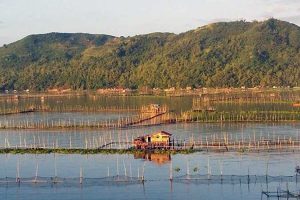RISK ASSESSMENTS on lakes and river basins are key to forecasting flood disasters and must be part of flood mitigation efforts and emergency preparations, the Japan International Cooperation Agency (JICA) said, citing researchers from the University of the Philippines (UP).
The conclusions were drawn from a presentation delivered in February by the UP researchers at the 9th International Conference on Flood Management in Tsukuba, Japan.
In a statement, JICA said the Japan presentation was part of ongoing cooperation under a program known as Science and Technology Research Partnership for Sustainable Development (SATREPS).
“In managing flood risk, there is a need to ensure equitable benefits for disadvantaged communities. We must effectively manage the operation of the lake for flood detention so as not to cause flooding elsewhere,” Eugene C. Herrera of the UP Institute of Civil Engineering was quoted as saying in the statement.
Mr. Herrera cited Laguna de Bay, where he advocates a decision support system for assessing the environment and resources in the course of managing the body of water, which is among the largest in Southeast Asia at over 900 square kilometers.
Despite its great contribution to fish supply, Laguna de Bay is also a factor in the flooding of adjacent areas.
The Laguna Lake Development Authority (LLDA), an arm of the Department of Environment and Natural Resources (DENR), is the agency tasked with managing and developing Laguna de Bay, whose shores touch Metro Manila and Laguna and Rizal provinces.
Fernando C. Sanchez, Jr., former chancellor of UP Los Baños (UPLB), noted current efforts to employ hybrid water-related disaster risk assessment models to predict disaster scenarios.
The project aims to assess the effectiveness of investing in disaster prevention measures in the Pampanga River, Pampanga-Marikina River, and Laguna de Bay.
“(I am) hoping that the Philippines, like in the Laguna de Bay, can adopt Japan’s lake management techniques, particularly in the area of water governance,” Mr. Sanchez said.
Lake Biwa, Japan’s largest freshwater lake, is managed by Japan’s Development Integrated Operation & Maintenance Office in coordination with other agencies. They collaborate in the Lake Biwa Comprehensive Development Project, which primarily focuses on flood control and water resources development.
Patricia Ann J. Sanchez of UPLB – School of Environmental Science and Management (SESAM), presented her study of policies and ordinances relating to flood drought management in municipalities around Laguna de Bay.
“The knowledge exchanged between Filipino and Japanese researchers through JICA’s joint research program, SATREPS, aims to promote science-based solutions to society’s common problems like water resource management and flood disasters,” JICA Chief Representative Sakamoto Takema said.
The program aims to build a climate-based model to analyze water disasters to contribute to the government’s efforts in flood mitigation, emergency response, and building resilient infrastructure. — Sheldeen Joy Talavera
